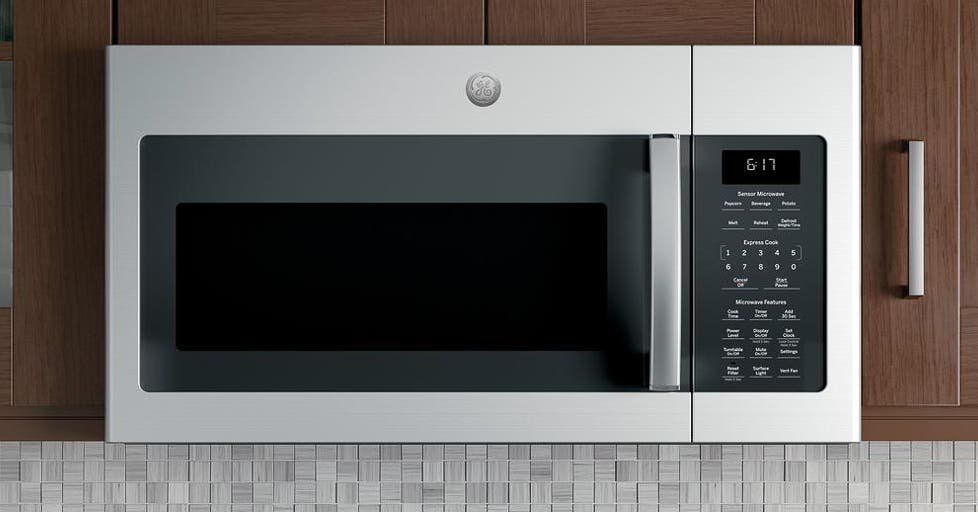
An over-the-range microwave is for those who want to save space (and a little bit of money) by combining a large microwave and range hood into a single appliance. The microwaves themselves work fine—they are usually not significantly better or worse than countertop or built-in microwaves in terms of heating performance, reliability, or features. (Except for more expensive models, which now come with additional cooking modes like convection baking, broiling, or air-fry.) The ventilation capability is similar to that of most budget-friendly range hoods, at around 300 cubic feet per minute (CFM) of air movement on affordable models, and rarely surpassing 400 CFM even on higher-end models.
If you’re replacing an existing OTR microwave, you should be able to install most new models into the old space without much trouble. Nearly all OTR models have the same 30-inch width. (A few OTR models are designed to fit over a compact 24-inch range. Some brands used to make 36-inch OTR microwaves, but none of them are currently available, as far as we’ve seen.)
The depth and height of OTR models can vary, but most of the budget-conscious models we’ve focused on for this guide are roughly the same size. Your installer might need to drill a few new holes to line up the new support bracket, vents, and power cord properly, but that’ll all be hidden behind the machine anyhow. All of the OTR models we know of can vent to both the rear and the top of the machine (depending on where your ducts are) or can work in recirculation mode.
If you have the option, we strongly recommend setting up your over-the-range microwave to vent to the outside. When scientists at the University of California’s Lawrence Berkeley National Laboratory studied the use of range hoods to mitigate indoor air-quality problems in 2017, they found that those that vent to the outdoors can reduce pollutant concentrations in the air from cooking by 80% to 95%. The best air-circulating version was able to reduce pollutant concentrations by only 50%. (Recent studies about cooking and indoor air quality also show that you should turn on your microwave hood every time you cook or bake, not just when you’re deep-frying fish or charring the heck out of a steak.)
If you’re remodeling and trying to decide between an over-the-range microwave or a dedicated range hood, first consider what kind of stove you have. A microwave hood or range hood is really there for ventilation, not odors or smoke, notes Jessica Petrino Ball, who runs the education programs at the kitchen appliance retailer AJ Madison. Vents or exhaust hoods work by sucking up and removing steam and gases as you cook, she says. (That action also tends to move smells, heat, and tiny steam-borne grease particles out of the kitchen—which keeps it cleaner and less smelly, as well.)
The common rule of thumb is that you’ll want 100 CFM in your hood for every 10,000 Btu (British thermal units) you use on a gas stovetop. Even on a basic range, the two strongest burners alone use at least 30,000 Btu combined when they’re on full power. That’ll stretch the capabilities of a basic 300 CFM over-the-range microwave. So will a higher-end range, which tends to have stronger burners. You’ll often create more smoke than the microwave can clear, and the microwave handle can get uncomfortably hot to the touch, so a range hood is probably a better option. (You can look into a countertop, wall-installed, or drawer microwave instead; you can also read our tips on how to use your gas stove safely without a proper range hood.)





